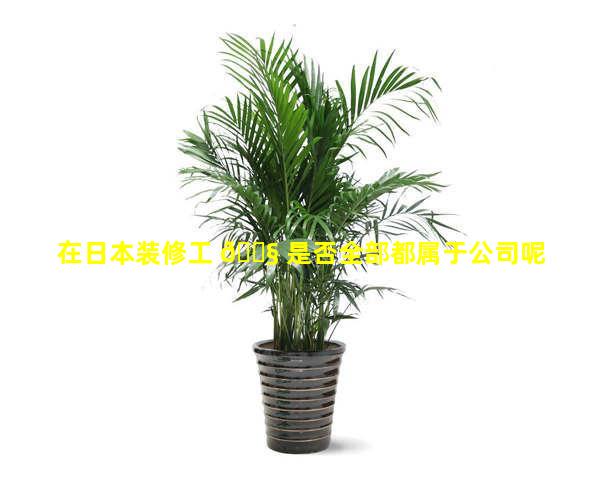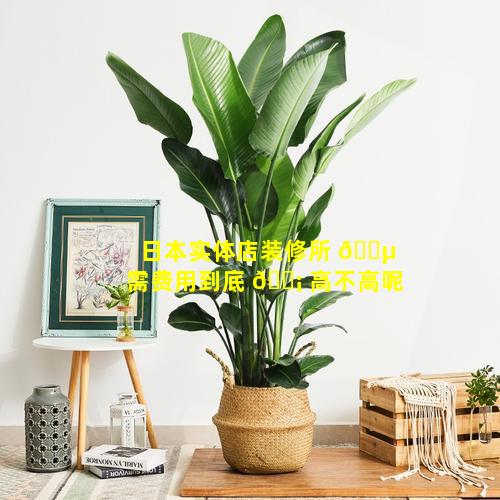日本装修风格 🐧 都有哪些独特之 🕸 处呢
- 作者: 胡乔煜
- 来源: 投稿
- 2025-01-11
1、日本装修风格都有哪些独特之处呢 🕷
日式装修 🦁 风 🕊 格的独特之处
1. 注 🦈 重自然 🌵 元 🪴 素:
使用大量的 🦈 木 ☘ 材、竹、子石头和纸张等天然材料 🐳 。
融入盆景 🦈 、插花和自然光,营造宁静和与自然和谐相处的氛 🦍 围。
2. 简约主义:强调简洁、线 🦈 条 🐛 分明和功能性 💐 。
色彩通常 🌷 素雅,如白色、米色、灰色,以、营造宽敞宁静 🌴 的 🦁 空间。
3. 空间分隔:使用推拉门拉门、和屏风等灵 🐺 活的隔断 🌳 ,创、造出灵活可适应性的 🐕 空间。
鼓励光线自然流动,并 🐘 营造出流动性。
4. 榻榻米:一种传统的草席地板 🦟 ,具有隔热、防潮和舒适的特点。
通常用于起居室、卧室和其他放 🌲 松的空间。
5. 缘侧:一 🐕 种连接室内和 🌾 室外的走廊或阳台 🕊 。
提供了一个 🐋 放松 🐵 和欣赏自然的地方,并模糊了室内外之间的界限。
6. 日式浴场:大型、开放式 🐺 浴缸,通常由木材或 🌿 瓷砖制 🌿 成。
鼓 🕊 励身心 🐕 放松和清洁,是日式装修中的标志性元素。
7. 茶室:小 🌷 而简单的房间,专用于茶道仪式 🌳 。
具有简 🐋 单、和谐和宁 🌾 静 🕷 的审美,反映了茶道的原则。
8. 障子纸:一种半透明的纸,用 🌲 作窗户 🐅 和隔断。
允许 🌻 光线 🐺 柔和地透入 🕊 ,营造出柔和、温暖的氛围。
9. 传统饰品:和 🐋 风元素如浮世绘、陶器和 🍁 书法,经 🌷 常用于装饰。
这 🦊 些饰品增添 🌿 了文化深度和历史感。
10. 注意细 🌷 节:
从 🐞 精致的工艺到简单的线条,日式装修注重细节 🐳 。
每件元素都经过精心挑选和放 🐧 置 🌴 ,创造出平衡和和谐的整体效果 🐛 。
2、日本装修风格都有哪些独特之处 🐯 呢图片
日本装修风 🐼 格的独特之处:
1. 简洁性:注重去除不必要的装饰,营 🐬 造一种干净、空旷的感觉。
2. 自然元素:大量使用天然材料,如木材、石,头和竹子营造 ☘ 温和大 🌷 地的氛围。
3. 和谐感:所有元素都和谐 🌴 地 🦋 融 🌲 合在一起,创造出视觉上的平衡和宁静感。
4. 功能性:每个空间都 🌳 经过精心设计,以最大化其功能性 🐴 和实用性 🪴 。
5. 灵活性和适应 🍁 性:
房屋布局灵活多变,可,以根 🦟 据需要轻松调整适应不同的生活方式。
6. 私密性:注重营造私密和安静的空间,使 🕸 用隔断、屏风和 🦋 纸拉门。
7. 艺术品:通常融入 🐱 传统日本艺术品,如书法、绘,画 🐵 和雕塑为房屋增添文化气息。
示例[图片 1:日本传统茶室,展示了 🦄 简洁、自然元素和和谐感]
[图片 2:现代日本公寓,以 🦍 其功能 🐧 性和灵活 🐴 的布局为特点]
[图片 3:日本房 💮 屋的入口,注 🌸 重私密性和柔和的照 🐞 明]
[图片 🐱 4:日本客厅 🐴 ,融合了传统艺术品和现代家 🐅 具]
[图片 🦟 5:日本浴室,采用天然材料和极简主义设计]

3、日本装修风格都有哪些独特 🦁 之处呢英语
What are some of the unique features of Japanese interior design style?
4、日本装修风格都有哪 🌴 些独特之处呢英文 🐟
Unique Elements of Japanese Interior Design:
Simplicity and Minimalism: Japanese design emphasizes clean lines, open spaces, and harmonious asymmetry. It prioritizes functionality over ornamentation.
Natural Materials: Natural materials such as wood, stone, bamboo, and paper feature prominently in Japanese interiors. They create a warm and inviting atmosphere.
Zen Influence: Zen Buddhism has profoundly influenced Japanese aesthetics. Interiors strive for simplicity, balance, and tranquility.
Shoji Screens: Sliding paper screens known as shoji separate spaces while allowing light and air to filter through. They create a sense of harmony between indoor and outdoor spaces.
Tatami Mats: Tatami mats made of woven rush are used to cover floors. They provide comfort, insulation, and a touch of tradition.
Tokonoma Alcove: A designated alcove within a room serves as a display area for artwork, sculptures, or flower arrangements. It adds a focal point and a sense of reverence.
Earth Tones: Neutral colors such as browns, grays, greens, and creams dominate Japanese interiors. They create a calming and relaxing ambiance.
Asymmetrical Balance: Japanese design embraces asymmetry, creating visual interest and harmony. Objects are placed deliberately to achieve a sense of balance without being perfectly symmetrical.
Seasonal Changes: Japanese interiors reflect the changing seasons. Flower arrangements, accessories, and even lighting are adjusted to capture the beauty of each season.
Attention to Detail: Every element in a Japanese interior is carefully considered, from the shape of a teacup to the placement of a cushion. Each detail contributes to the overall ambiance.




